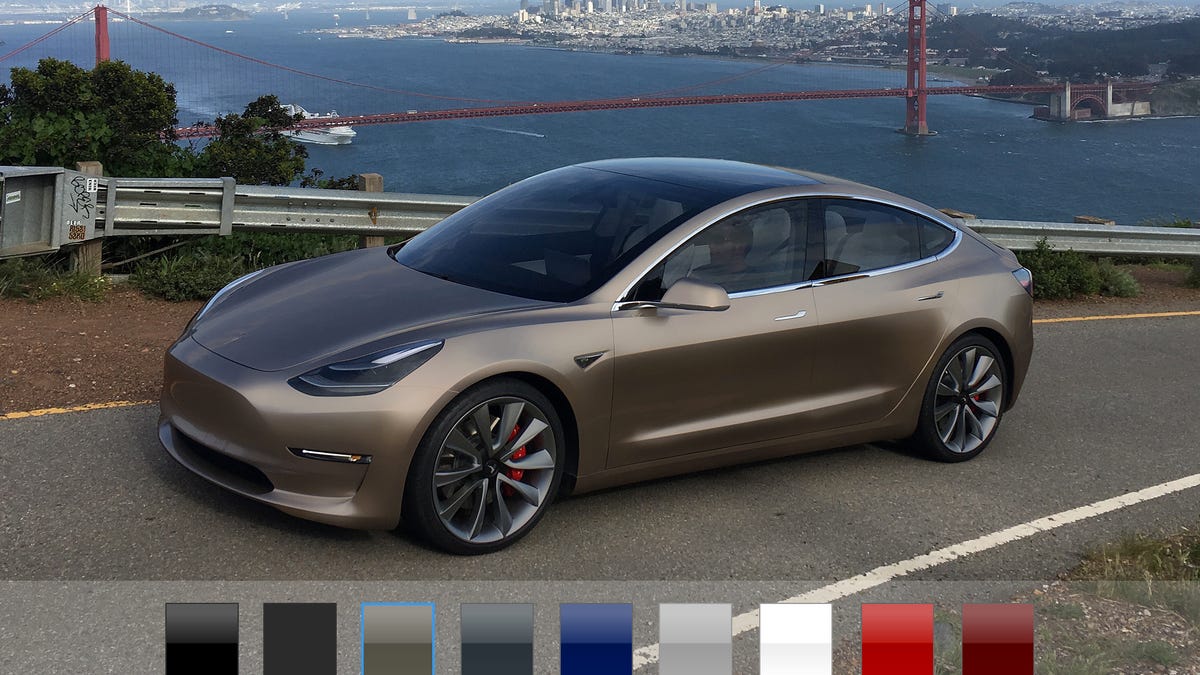Here's how Tesla is preparing for the Model 3 launch
It's more than just setting up a production line or two. Way more.

Tesla just released its earnings report for Q1 2017, and while the numbers are... what they are, Tesla also dropped some information on how it's preparing for Model 3 production.
From the production side
Right now, Tesla's Model 3 is in the "release candidate" stage. For those of you unfamiliar with software or hardware development, a release candidate is an internal beta version that can potentially be a final product, barring any last-minute changes. The cars are built using production-ready tooling and are currently being road tested.
But the car is one small part of the entire production process -- there's also the production itself. Tesla has to coordinate with suppliers to ensure a steady stream of parts, and its own efforts must also be set. The paint shop prep is complete, but the automaker is still finishing up other parts of the process. It's also installing equipment for volume production of the Model 3 battery at Gigafactory 1, which is all but required to meet its lofty Model 3 production goals.
Tesla is shooting for the moon with its production ramp-up. It wants to start at 5,000 vehicles per week, or roughly 20 percent of its Q1 2017 production -- in a single week. At that pace, it could theoretically build 260,000 cars per year. It hopes to ramp that up to 10,000 Model 3s per week in 2018, which would be on pace with Elon Musk 's hope of building more than 500,000 cars per year.
I'm just looking forward to the day when I can stop using year-old Model 3 prototype photos.
From the customer side
Let's say Tesla follows through with all the aforementioned promises, and it starts cranking out Model 3s like a child surrounded by Lego bricks and amphetamines. There's still the whole matter of how to deal with the customer side of things.
To meet what Tesla hopes will be massive demand for the Model 3, the automaker is adding some 100 customer-side facilities around the world -- this includes space for retail, delivery and service. Tesla also wants to grow the number of certified third-party body shops, as there have been many reports of Tesla owners facing serious backlogs when it comes to bodywork.
Not only will there be more Tesla locations, they'll be physically larger, too. After all, adding a new model means either shrinking the existing per-model floor space or creating more. It's making sure to add more service bays, too -- again, to address issues related to current backlogs, as well as preparing for additional demand on top of that.
That addresses the physical aspects of service, but what of quality? In order to attempt to get ahead of the increased demand for service that will come with a larger owner base, Tesla hopes to add "more than 100" of its mobile repair trucks in Q2 2017. They're not going to re-paint panels on a driveway, but for superficial problems, a repair truck is easier for an owner than trekking to a service center and facing potentially long lines.
Remote diagnostics will play a part, too. Tesla claims that using remote diagnostics to investigate issues before cars even arrive at service centers has reduced repair times by 35 percent.
If that sounds like a lot of moving parts to get in line, it is, especially considering Model 3 production is set to begin later this year. Time is running out, and while Tesla is capable of pulling it off, it will require some serious effort to ensure everything happens on the currently established timeline.

